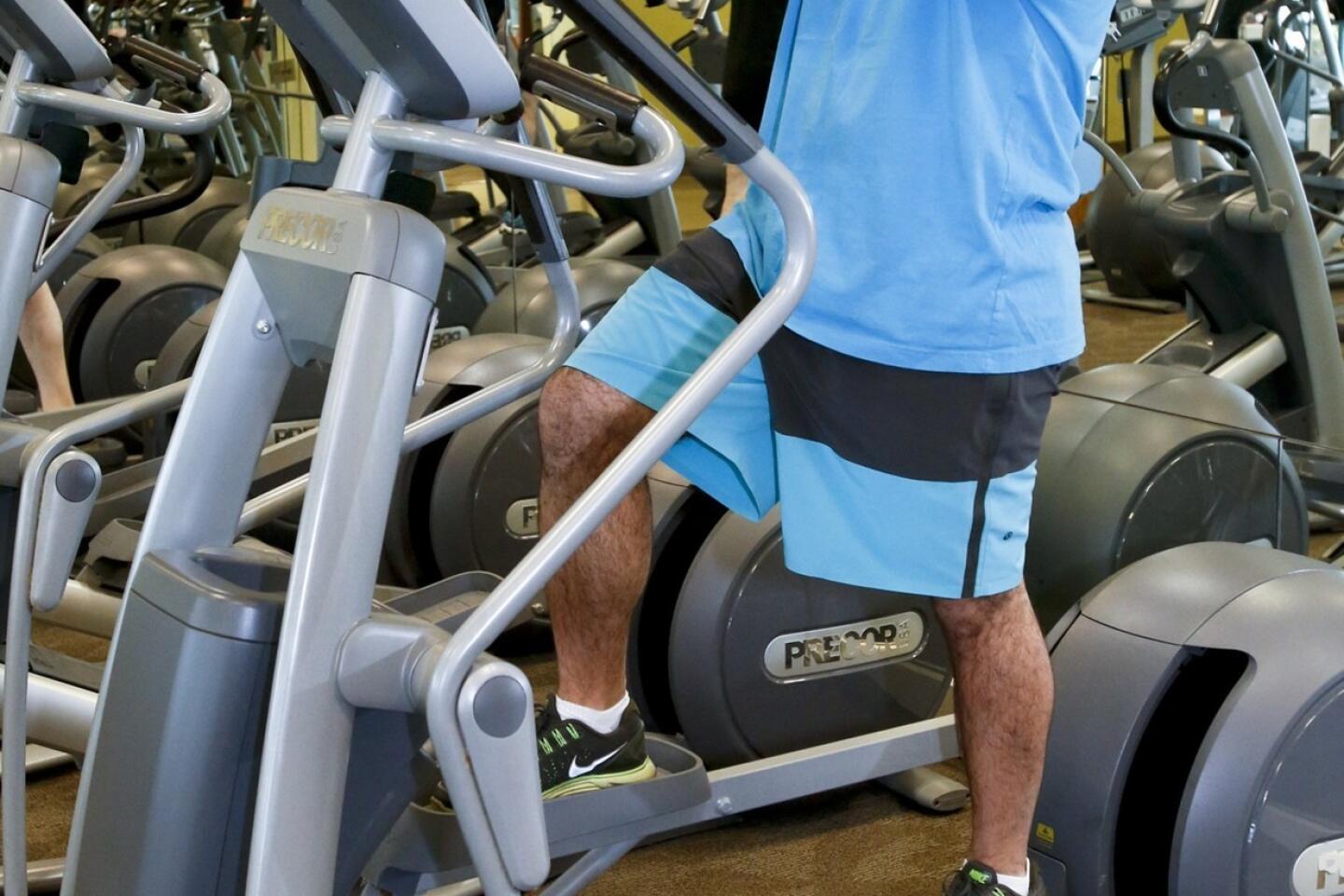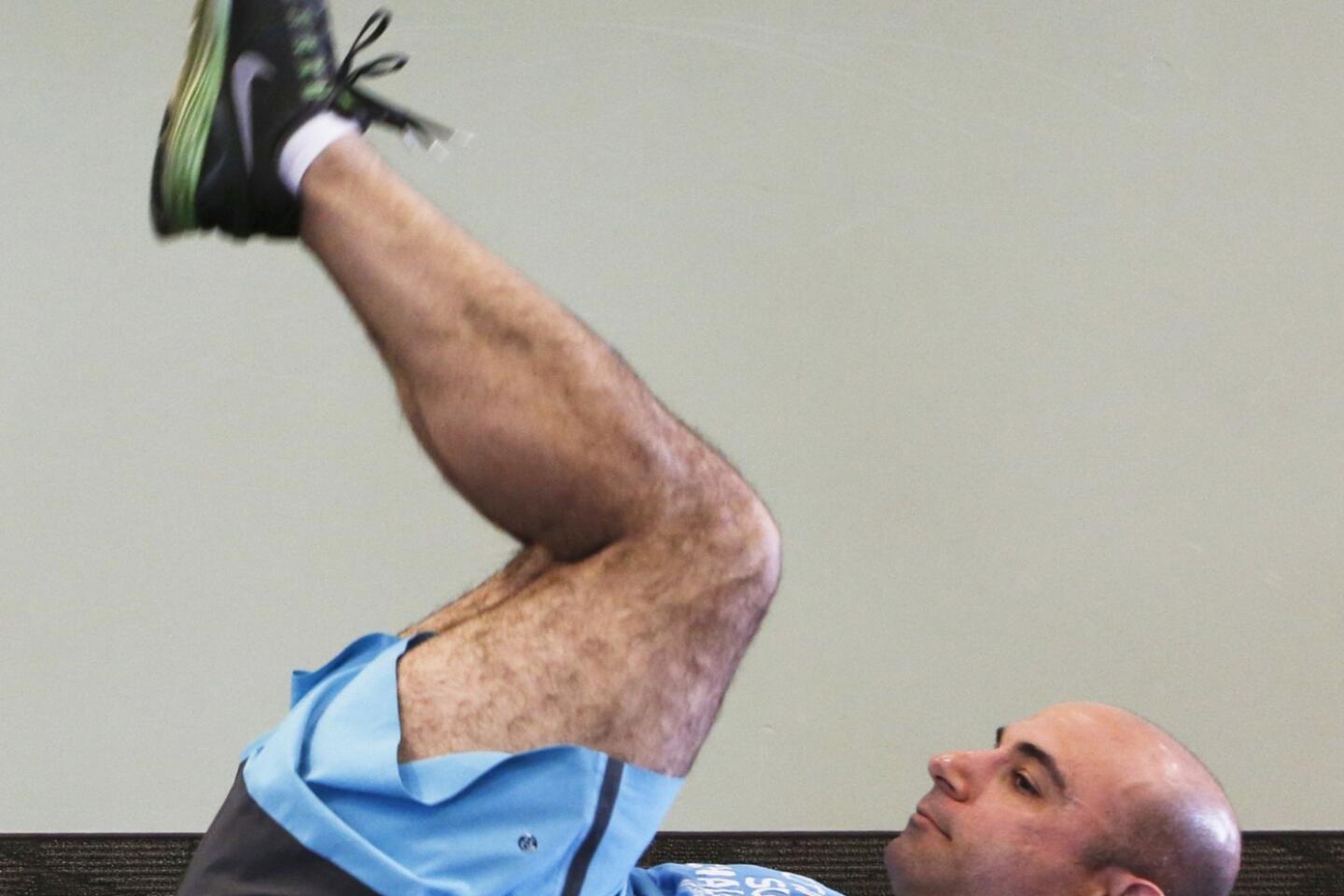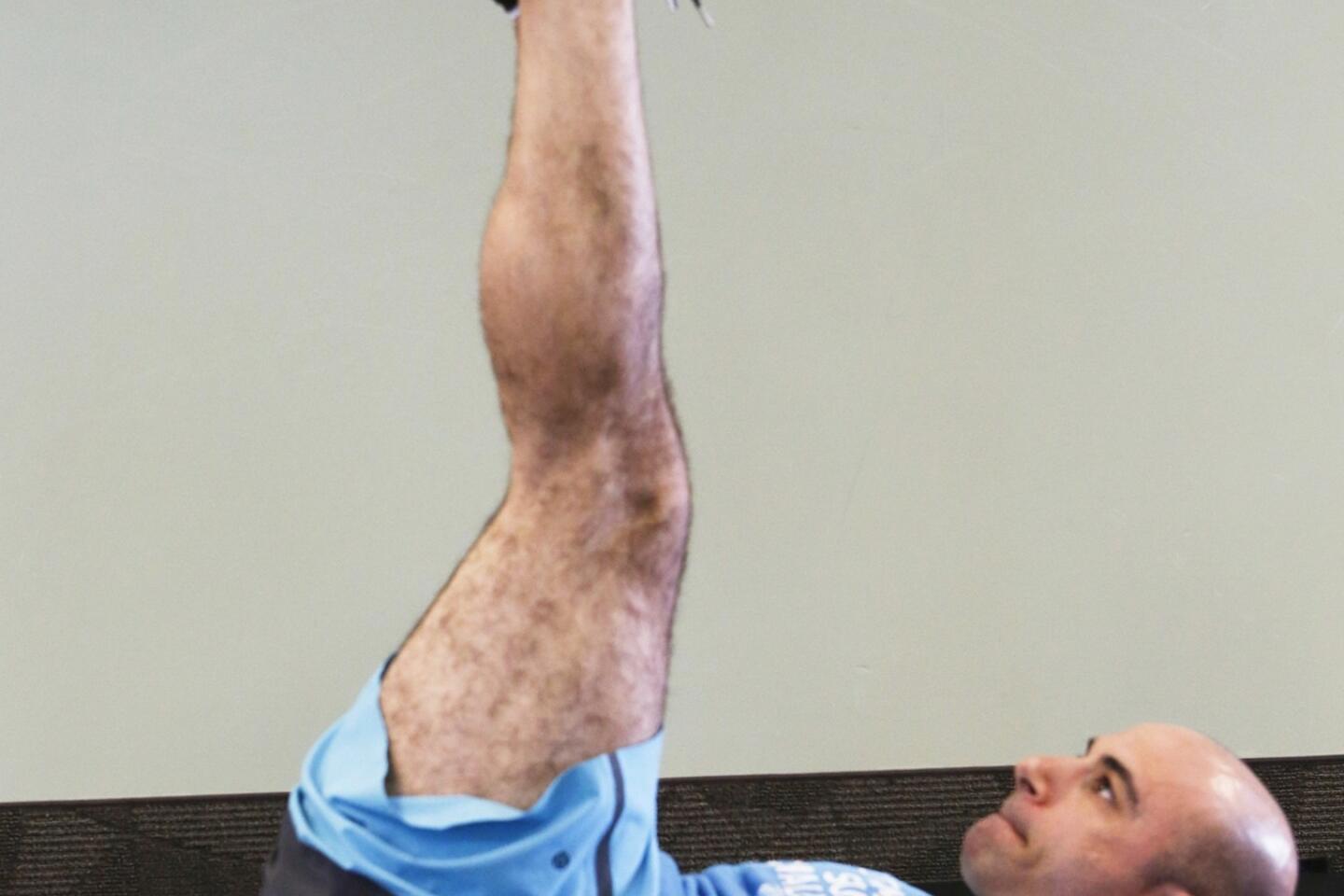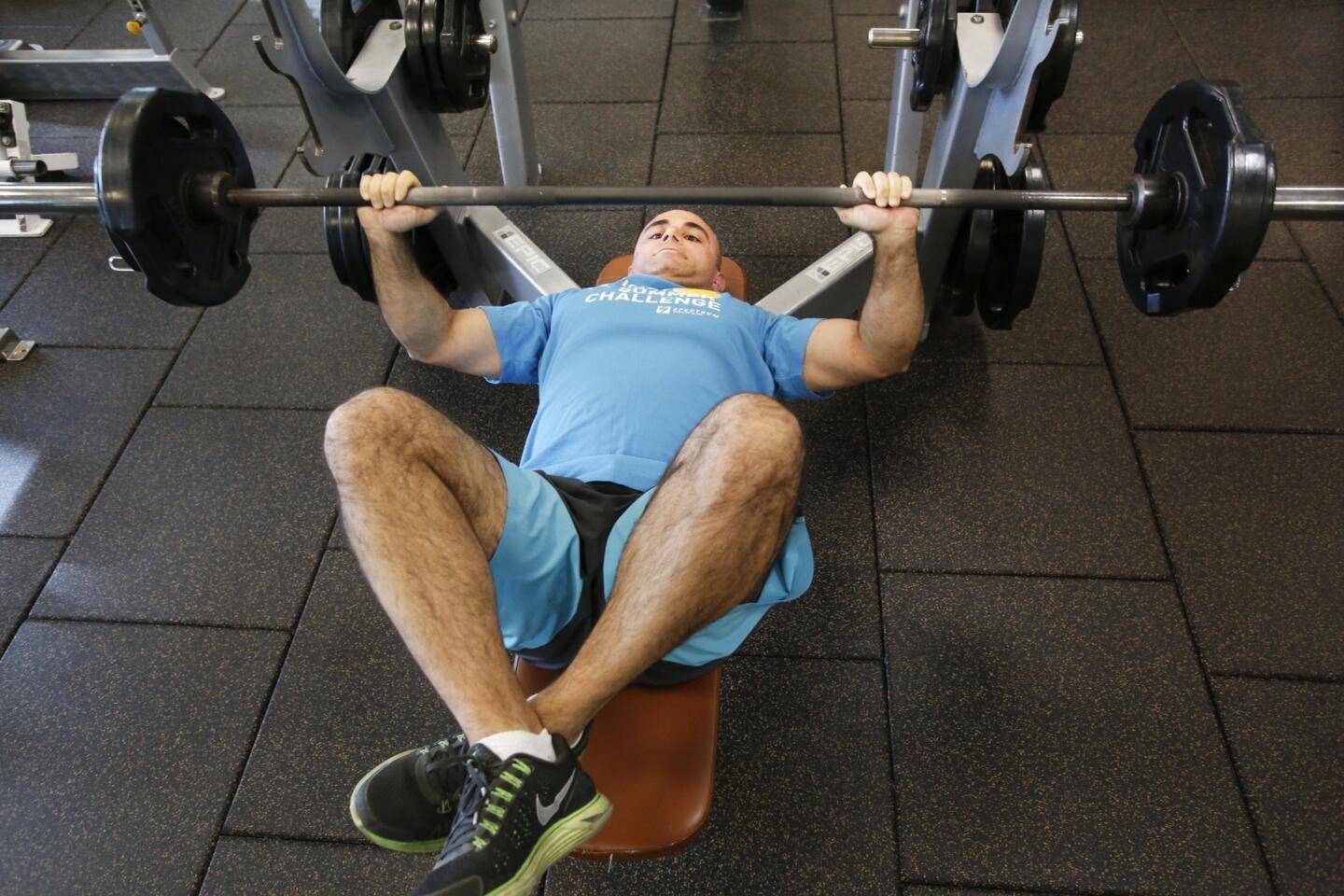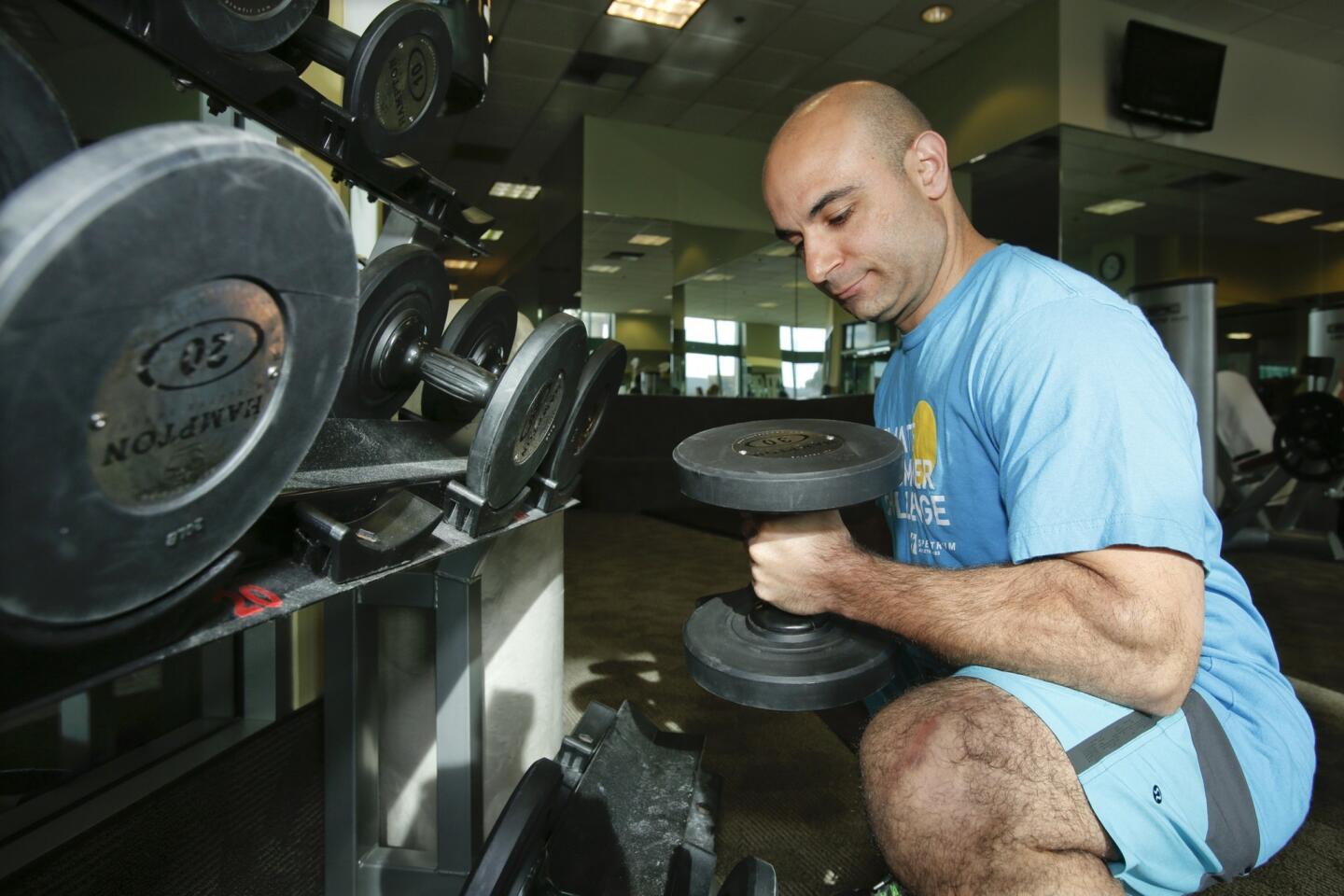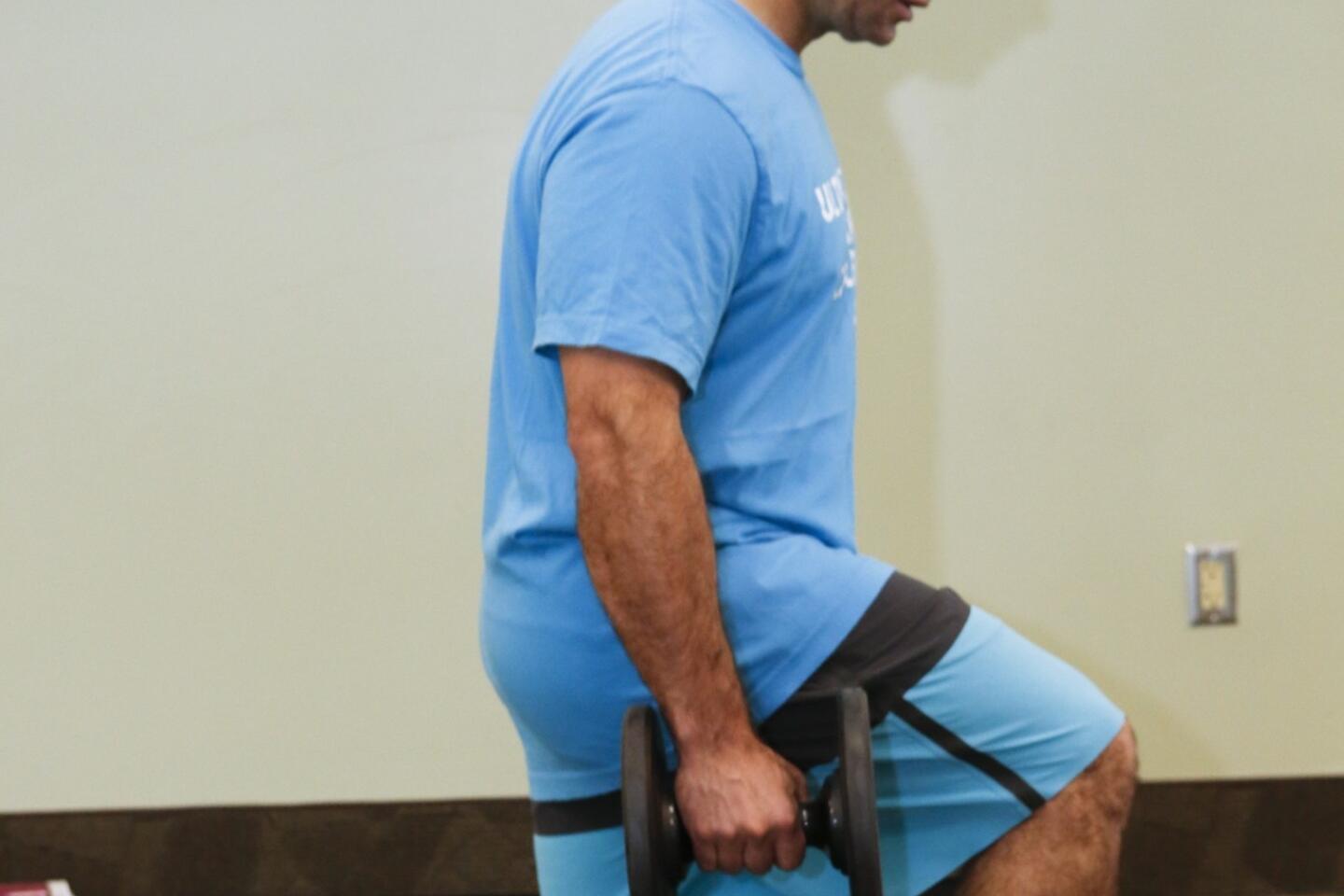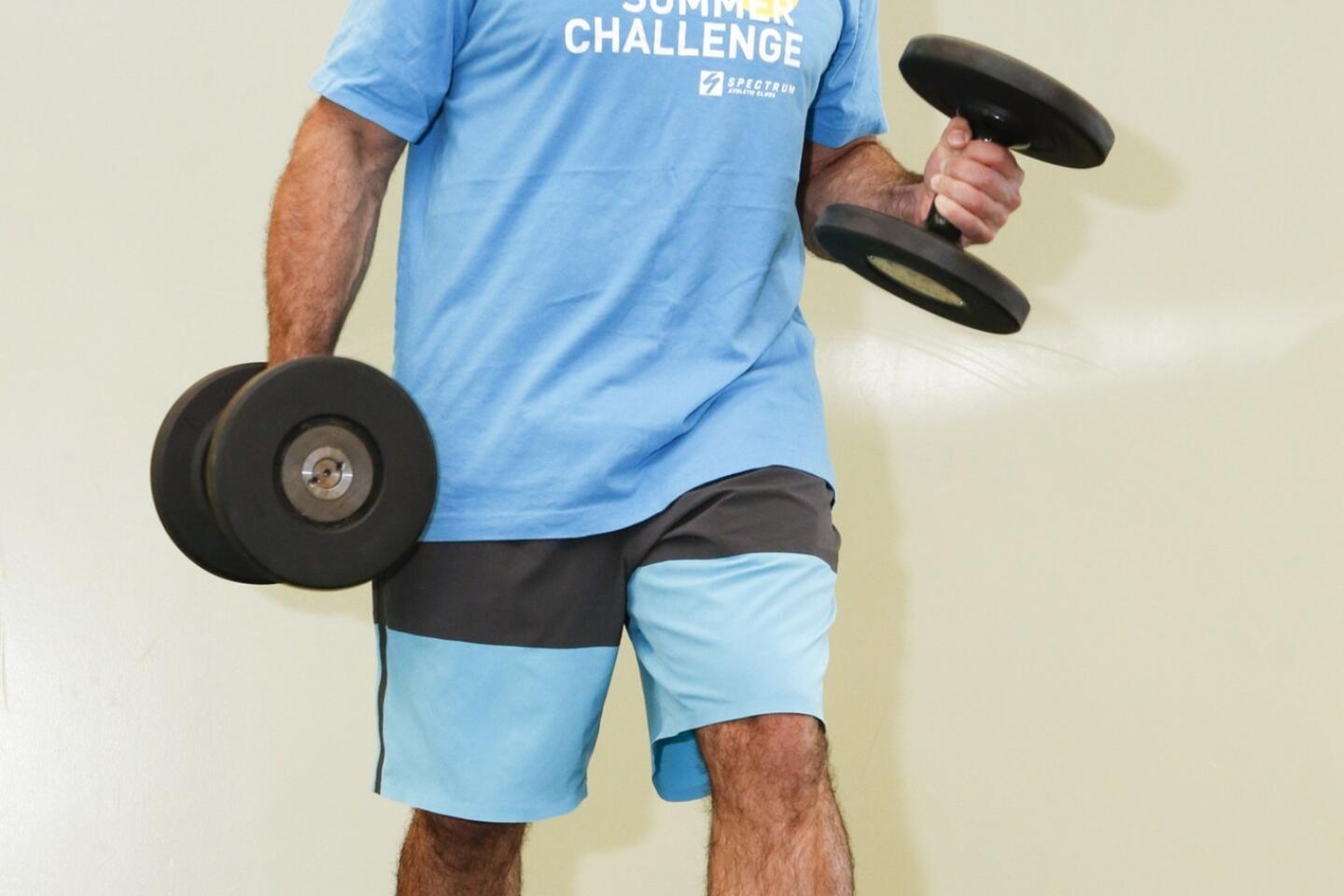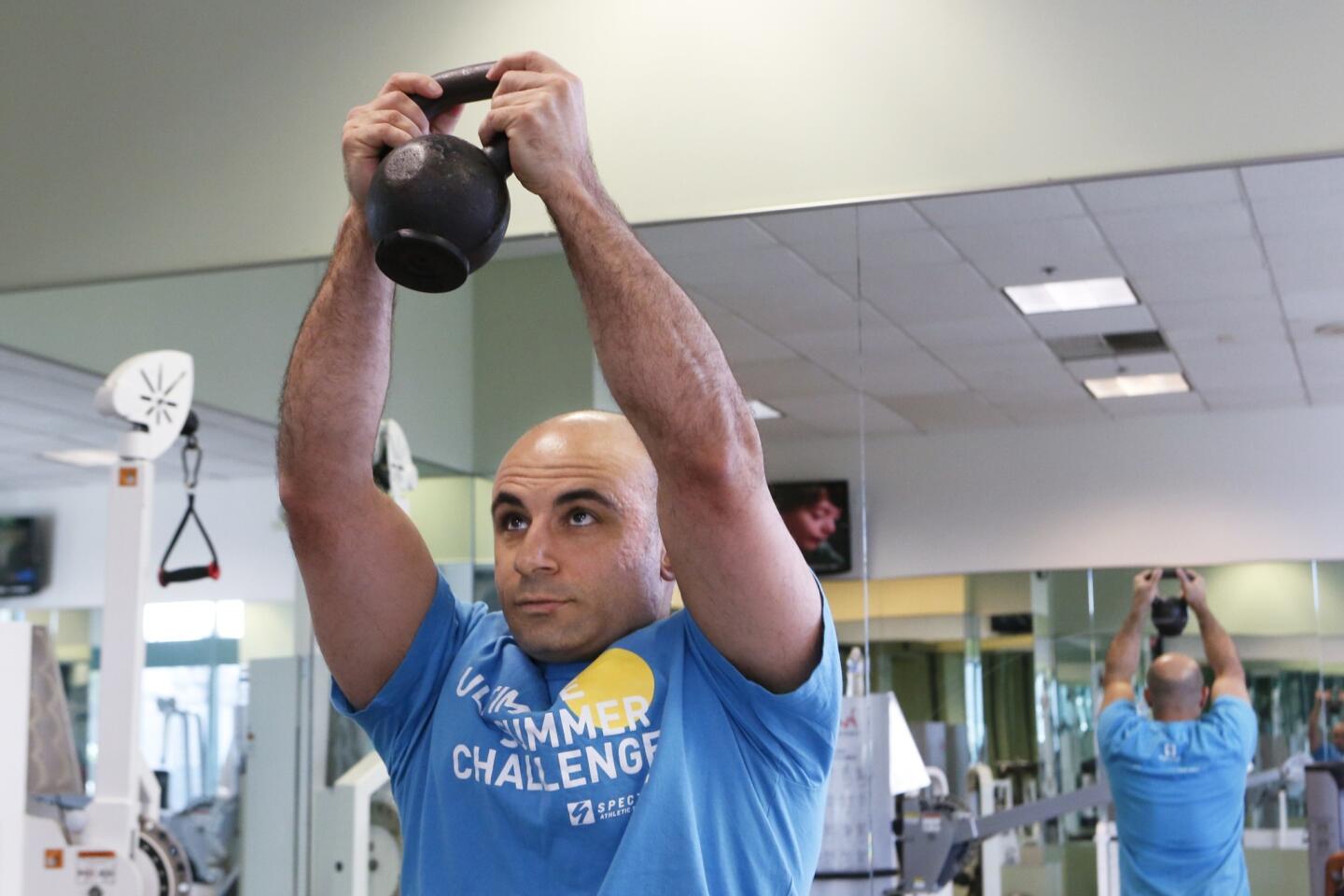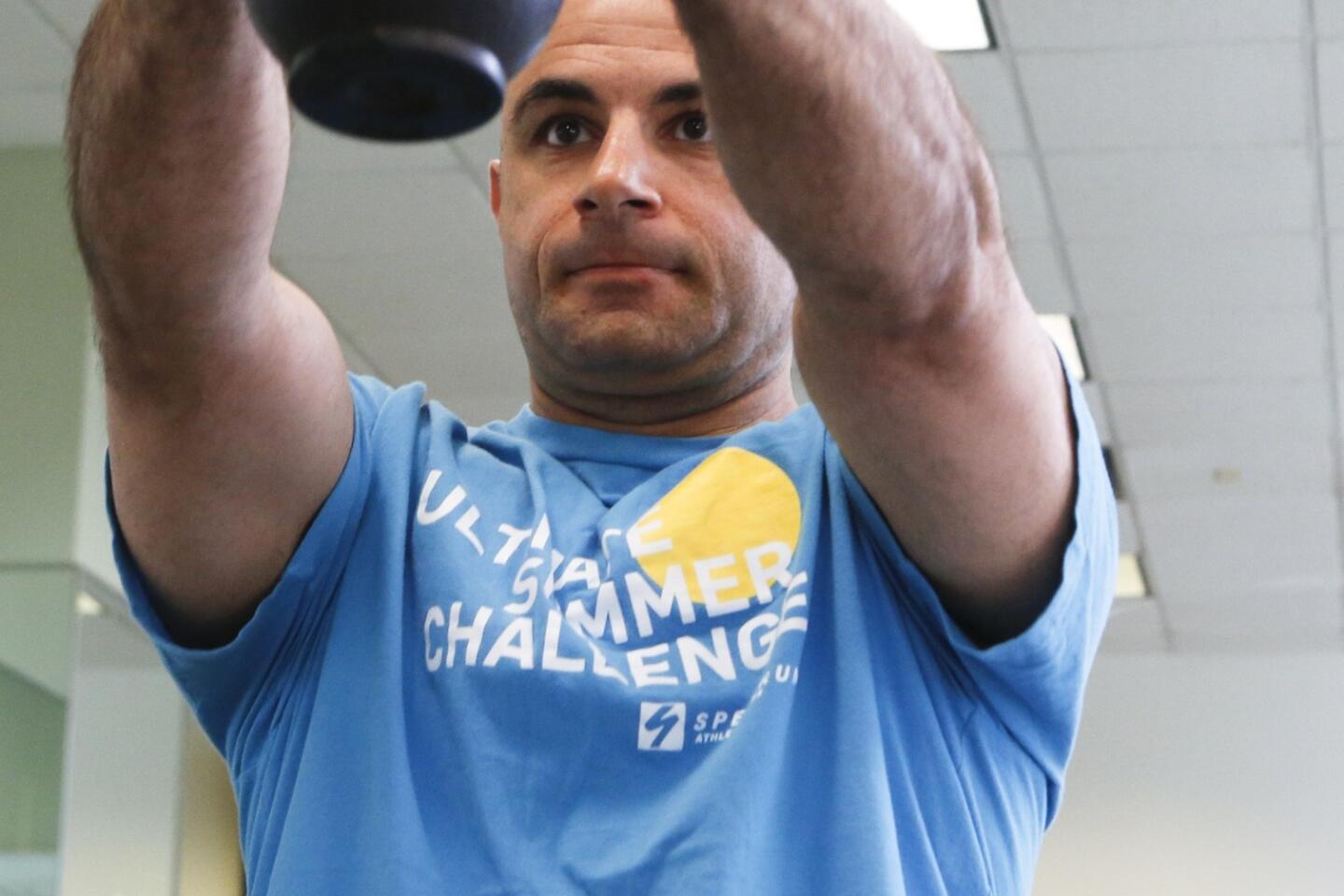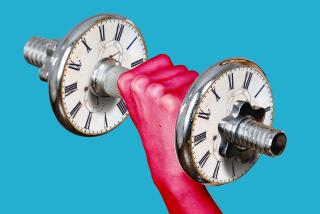Dr. Hooman Melamed’s tips for avoiding workout injuries
Those fitness resolutions will do you no good if they lead you to visit the likes of Hooman Melamed.
As an orthopedic spine surgeon, Melamed sees the downside of efforts to get strong and fit. Exercising the wrong way can put a person out of commission for a long time, he says.
One recent morning, Melamed met us at the Spectrum gym in Santa Monica and demonstrated the right way to do some common exercises and use some popular equipment, and he talked about the risks of getting it wrong.
PHOTOS: Avoiding workout injury
Melamed, director of scoliosis at Marina del Rey Hospital, says he often sees people whose injuries could have been avoided with good form or more conservative workouts. And injuries often are cumulative, meaning the more you do an exercise the wrong way, the greater the injury can be, he says.
In general, movements should be controlled and steady, Melamed says. That doesn’t mean you can’t move rapidly. In fact, Melamed endorses that as a way to make an exercise do double duty building muscles and increasing the heart rate.
Breathe. Melamed says inhaling and exhaling with the natural rhythm of the exercises will help keep you in control.
Some of these are simple adjustments, and they might seem unimportant, Melamed notes, but by using proper form, you train your brain, making it more likely you’ll avoid injury when playing sports and not concentrating on form.
“Most of us are not trying to be Mr. Olympia. You don’t need crazy heavy weights, and we need our bodies forever,” he says.
Elliptical machine
This is a popular machine in many gyms, perhaps because it’s easy to read while working out. But that, Melamed says, can also cause problems, not the least of which is that you don’t get all the calorie-burning, heart-pumping benefits if you’re more concerned with your book than your thighs.
Concentrating on a book can take concentration away from form. And to read, some people tend to jut their chins forward into a “swan neck” position that can cause pinched nerves in the neck.
It’s also not a good idea to lean forward on the machine and rest weight on the handrails — tempting, especially as you get tired. What you should aim for is an upright position, Melamed says.
Crunches
Who besides Santa doesn’t want a flat belly? For many of us, it takes effort, but the wrong effort won’t help the abs and could cause injury. First, don’t strain your neck by jerking upward with your hands clasped behind your neck. That movement can also torque the back and tear tissue, Melamed says. An alternative is to cross your arms so the hands are touching the opposite shoulders.
Another approach, he says, would be to have a partner stabilize your feet while you crunch up with control, working the muscles of the abdomen, not the back or neck. A third possibility is to place your hands under your buttocks, draw your navel toward your spine and then lift your bent legs, raising and lowering the hips from the floor.
To make it more challenging, and sudden moves less likely, hold a light medicine ball between your feet.
Bench presses
Melamed says people tend to arch their back on weight benches, more so as they tire or as they increase the weight. That can lead to a torn annulus, the tissue that protects the disks in the spine. Most of the time those tears can heal themselves, but it can take a year, he says. “How do I know? Because I did it too.”
One way to prevent that is to raise the legs into tabletop position, keeping your back flat on the bench.
Another bad move is bouncing the barbell off the chest, which also occurs more as people tire. If you can’t move smoothly and can’t complete at least 15 repetitions, you might be trying to lift too much weight, Melamed says.
Improper weightlifting can cause sciatic pain, bulging disks and ligament sprains, he says.
Melamed recommends doing weight work at the end of a workout, when you are already somewhat tired and likely to use lighter weights. “It’s about having good form, and also you are warmed up so you’re less likely to get hurt.”
Biceps curls
Even before they start this exercise, many people risk injury when they lift a weight off the rack, Melamed says. People are not thinking about form at that point, and that’s a mistake, because a careless bend can hurt the middle or lower back. You should stand facing the weight rack, squat if the weight is below chest level and bring it close to your chest to start an exercise.
He recommends doing biceps curls with one foot forward, knees slightly bent. That posture relaxes the back and ensures there’s no pressure on it. Start by holding the weights so the knuckles face outward, and turn your palms up as you raise the weights. Elbows remain still, as if someone were holding them at your sides. And as with other moves, no jerking motions.
Kettle bells
These metal weights with handles have become popular in gyms, and they provide a great workout — used properly. Melamed says he sees patients who get hurt when they swing the kettle bell too forcefully or too high, or when they try to hold too much weight too far away from their torsos. Again, the risk is tearing the tissue around the disks, as well as torn muscles and herniated disks.
Some common exercises require jumping with the kettle bell. It’s important to land on the balls of the feet — “like a cat” — and with the knees behind the toes to avoid knee injuries such as tearing the anterior cruciate ligament (ACL), he says. Try to make the jumps the same each time, and engage the abdomen and buttock muscles, he says.
ALSO:
Wearable gadgets pump up workouts
High-tech products to improve your health
For food on the go, bars are eating up the competition
